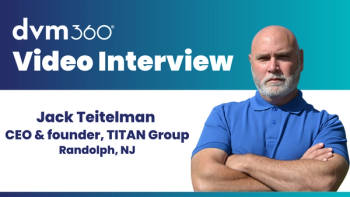
Will your veterinary practice be on the hook for credit card fraud?
Here's how to comply with a global security standard coming to the United States for the first time.
There's a storm of legal liability brewing on the horizon for your veterinary practice if you accept credit or debit cards.
After Oct. 1, 2015, any business that doesn't have a Europay, MasterCard and Visa (EMV) processing device will be on the hook for credit card fraud-not the banks or credit-card issuers. Are you ready?
What is EMV?
Traditional credit and debit cards are prime targets for counterfeiting because their magnetic stripes contain unchanging data. A new generation of cards-often referred to as “Chip and PIN” cards-sport a small, metallic square with a chip that creates a unique transaction code, every time the card is used. For one standalone payment terminal, it can generally be upgraded for around $100, according to a spokesperson for EMV.
Image courtesy of EMV Migration Forum
The big change
Consumers will need to receive their new EMV cards, activate them and learn new payment processes at the register.
Businesses will need to add new point-of-sale (POS) terminals, in-office technology and internal processing systems to accept the cards. The big difference? Instead of swiping, an EMV card is inserted into a terminal slot. Data flows between the card chip and the credit card company to verify and create the unique transaction data.
The one drawback-the new process isn't as fast as the old way.
What happens if you don't switch?
Veterinary practices can continue processing cards with magnetic stripes and ignore EMV. Most cards will still have a magnetic stripe as backup. But after Oct. 1, 2015, your practice might be on the hook for counterfeit or fraudulent card transactions.
The card companies will shift fraud liability to whoever is using the least-secure technology, according to EMV's website. Here is what that means in two different scenarios:
> If your practice has an EMV terminal but your client's bank hasn't issued a Chip-and-PIN card, the bank will be held liable.
> If your practice used EMV technology that wasn't flagged as fraudulent by the system, the credit card company bears the liability.
Every veterinarian and veterinary professional should protect themselves and their practices from fraud liability. The relatively small price of a new terminal may be worth the peace of mind it brings.
Mark E. Battersby is a financial consultant in Ardmore, Pennsylvania.
Newsletter
From exam room tips to practice management insights, get trusted veterinary news delivered straight to your inbox—subscribe to dvm360.





